   Society of Vacuum Coaters Society of Vacuum Coaters | December 2014 |
|
|
|
|
|
|
|
|
|
|
|
|
|
|
|
From Purdue University
November 5, 2014, by Emil Venere
"What began as research into a method to strengthen metals has led to the discovery of a new technique that uses a pulsing laser to create synthetic nanodiamond films and patterns from graphite, with potential applications from biosensors to computer chips. The biggest advantage is that you can selectively deposit nanodiamond on rigid surfaces without the high temperatures and pressures normally needed to produce synthetic diamond.
The technique works by using a multilayered film that includes a layer of graphite topped with a glass cover sheet. Exposing this layered structure to an ultrafast-pulsing laser instantly converts the graphite to an ionized plasma and creates a downward pressure. Then the graphite plasma quickly solidifies into diamond. The glass sheet confines the plasma to keep it from escaping, allowing it to form a nanodiamond coating."
Source: Purdue University
Image: Purdue University/Gary Cheng |
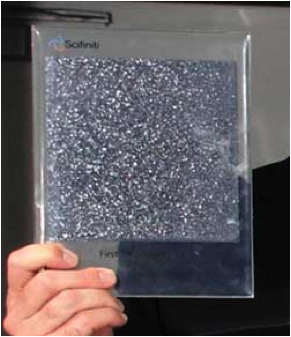 Solar Cell Materials: Finding a Happy Medium
From Photonics Spectra, September 2014, by Sharone Zehavi (Scinfiniti)
"The solar industry is at another inflection point in its development. While c-Si maintains its dominance and thin-film technologies wane, a new generation of silicon wafers on the horizon shows promise in delivering silicon-level efficiencies at a lower cost, as thin film was expected to achieve. Designed using a different approach to manufacturing, the production technology for this new type of wafer can circumvent the major shortfalls of current wafering processes, driving the wafer cost down by 65 percent while delivering efficiencies that are comparable or better.
The process is called APCVD, 'atmospheric pressure in chemical vapor deposition. Developed from the ground up, this new approach takes into account the features needed to produce an efficient, cost-effective solar cell and also the amount of silicon required to deliver the photovoltaic effect. Also considered was the cost of capital, focusing on the need to avoid having to change manufacturing technology or purchase new equipment. The result is a low-cost, continuous, atmospheric process that deposits a 30-Ám layer of industry-standard crystalline silicon on a conductive substrate.'"
Image: Photonics Spectra
|
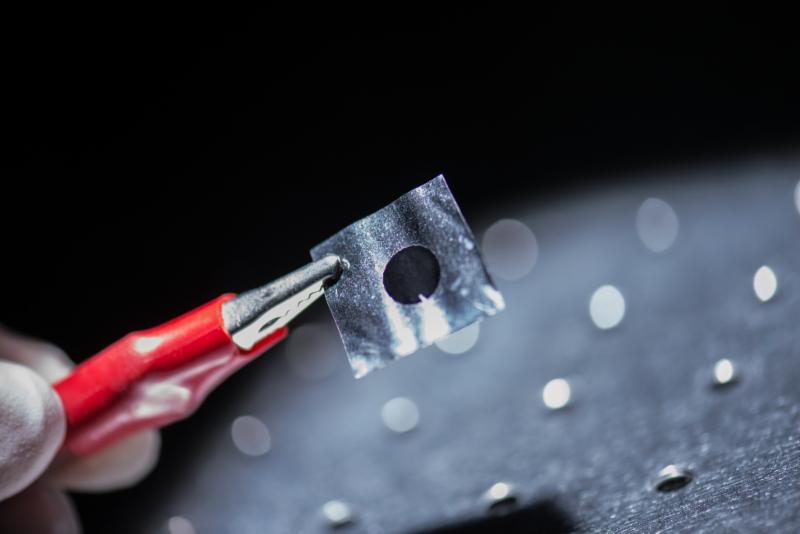 Graphene/Nanotube Hybrid Benefits Flexible Solar Cells
From Rice University,
November 17, 2014, by Mike Williams
"Rice University scientists have invented a novel cathode that may make cheap, flexible dye-sensitized solar cells practical. The Rice lab of materials scientist Jun Lou created the new cathode, one of the two electrodes in batteries, from nanotubes that are seamlessly bonded to graphene and replaces the expensive and brittle platinum-based materials often used in earlier versions.
The discovery was reported online in the Royal Society of Chemistry's Journal of Materials Chemistry A.
Dye-sensitized solar cells have been in development since 1988 and have been the subject of countless high school chemistry class experiments. They employ cheap organic dyes, drawn from the likes of raspberries, which cover conductive titanium dioxide particles. The dyes absorb photons and produce electrons that flow out of the cell for use; a return line completes the circuit to the cathode that combines with an iodine-based electrolyte to refresh the dye."
Image:
Jeff Fitlow/Rice University
|
 NASA Ultra-Black Nano-Coating to Be Applied to 3-D New Solar Coronagraph
From NASA's Goddard Space Flight Center, October 22, 2014,
by Lori Keesey
"An emerging super-black nanotechnology that is to be tested for the first time this fall on the International Space Station will be applied to a complex, 3-D component critical for suppressing stray light in a new, smaller, less-expensive solar coronagraph designed to ultimately fly on the orbiting outpost or as a hosted payload on a commercial satellite.
The super-black carbon-nanotube coating, whose development is six years in the making, is a thin, highly uniform coating of multi-walled nanotubes made of pure carbon about 10,000 times thinner than a strand of human hair. Recently delivered to the International Space Station for testing, the coating is considered especially promising as a technology to reduce stray light, which can overwhelm faint signals that sensitive detectors are supposed to retrieve.
Ground testing has proven that the coating absorbs 99.5 percent of the light in the ultraviolet and visible and 99.8 percent in the longer infrared bands due to the fact that the carbon atoms occupying the tiny nested tubes absorb the light and prevent it from reflecting off surfaces.
Goddard technologist is advancing a technique called atomic layer deposition (ALD) that lays down a catalyst layer necessary for carbon-nanotube growth on complex, 3-D parts. Previous ALD chambers could only hold objects a few millimeters high, while the chamber they have developed can accommodate objects 20 times bigger; a necessary step for the cylindrical baffles of this type."
Image: Greg Card/High Altitude Observatory, Boulder, Colorado |
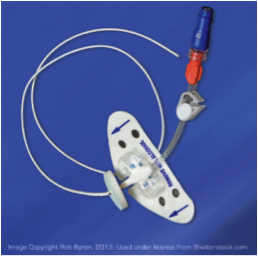 Advancing Antimicrobial Technology for Medical Devices
From Medical Design Briefs,
October 1, 2014, by Rakesh Kumar (Specialty Coating Systems, Inc.)
"Pathogens that cause healthcare-associated infections (HAIs), for example, central line-associated bloodstream infection, catheter-associated urinary tract infection, surgical site infection, and ventilator-associated pneumonia, pose an ongoing and increasing challenge to healthcare facilities around the world. According to the Safe Care Campaign accessed June 9, 2014, HAIs result in more deaths in the US than AIDS, auto accidents, and breast cancer combined. As a result of this global issue, medical device manufacturers are looking to antimicrobial coatings.
Silver has been the foremost antimicrobial in use due to its success against a wide range of microorganisms. While silver ion technology has been generally accepted in the industry, medical device manufacturers have expressed concerns as the technology wears down in strength over time. Also, high exposure or ingestion of highly concentrated forms of ionic silver may cause "argyria or argyrosis," a permanent ashen-gray discoloration of skin.
A newer alternative in the industry combines the benefits of biocompatible Parylene conformal coatings with antimicrobial properties to effectively eliminate harmful microorganisms. Parylene is an ultra-thin (micron-level), pinhole-free coating that is applied in a vapor deposition process. The molecular "growth" of Parylene coating ensures a uniform conformal coating that penetrates into every crevice, regardless of how seemingly inaccessible. Parylene coatings have a long history in the medical industry providing barrier properties against body fluids as well as moisture, chemicals, and common gases."
Image: Shutterstock/ Rob Byron (used in the article) |
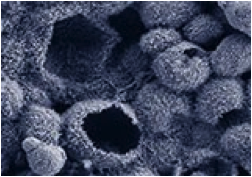 A Coating That Protects Against Heat and Oxidation
From Fraunhofer Institute for Chemical Technology, November 3, 2014
"Researchers at the Fraunhofer Institute for Chemical Technology ICT in Pfinztal have developed a coating technique that they plan to use to protect turbine engine and waste incinerator components against heat and oxidation. A topcoat from micro-scaled hollow aluminium oxide spheres provides heat insulation.
These spheres are hollow and filled with gas," explains coatings expert Dr. Vladislav Kolarik from the ICT's Energetic Systems department. When the outer side of a part is exposed to temperatures of 1000 degrees Celsius, these gas-filled spheres reduce temperatures on the part's inner side to under 600 degrees Celsius.
What's most remarkable is that the heat insulating layer from hollow aluminium oxide spheres is obtained on the basis of a conventional, economic process. Conventional thermal barrier techniques are expensive. The process the scientists adapted was originally designed to protect metallic components from oxidation."
Image: Fraunhofer Institute for Chemical Technology |
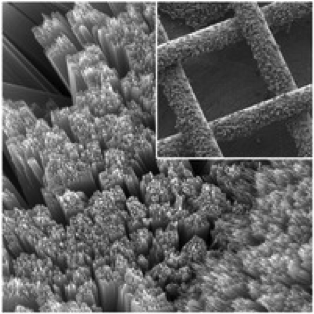
World's First Solar Battery
From Ohio State University,
October 3, 2014, by Pam Frost Gorder
"Is it a solar cell? Or a rechargeable battery? Actually, the patent-pending device invented at The Ohio State University is both: the world's first solar battery.
Key to the innovation is a mesh solar panel, which allows air to enter the battery, and a special process for transferring electrons between the solar panel and the battery electrode. Inside the device, light and oxygen enable different parts of the chemical reactions that charge the battery.
The invention also solves a longstanding problem in solar energy efficiency, by eliminating the loss of electricity that normally occurs when electrons have to travel between a solar cell and an external battery. Typically, only 80 percent of electrons emerging from a solar cell make it into a battery. With this new design, light is converted to electrons inside the battery, so nearly 100 percent of the electrons are saved."
Image: Ohio State University/ Yiying Wu |

Vision-Correcting Displays
From SPIE Professional Magazine, October 2014
"Researchers at Massachusetts Institute of Technology (MIT) and University of California, Berkeley in the US have developed a new display technology that automatically corrects for vision defects - no glasses (or contact lenses) required.
The display is a variation on a glasses-free 3D technology developed at MIT. But where the 3D display projects slightly different images to the viewer's left and right eyes, the vision-correcting display projects slightly different images to different parts of the viewer's pupil. This technology could lead to e-readers and smartphones that let users dispense with glasses."
Image: SPIE Professional Magazine |
 Controlling the Size and Shape of Graphene-Based Multilayer Structures
From Kyoto University, Institute for Integrated Cell-Material Sciences,
October 16, 2014
"Researchers in Japan have developed a novel yet simple technique, called "diffusion driven layer-by-layer assembly," to construct graphene into porous three-dimensional (3D) structures for applications in devices such as batteries and supercapacitors. Their study was recently published in the journal Nature Communications ("Diffusion-driven layer-by-layer assembly of graphene oxide nanosheets into porous three-dimensional macrostructures").
Graphene is essentially an ultra-thin sheet of carbon and possesses exciting properties such as high mechanical stability and remarkable electrical conductivity. When piecing together these tiny sheets into larger structures, the sheets easily stack with one another, resulting in a significant loss of unique material properties.
To overcome this challenge, the researchers from the Institute for Integrated Cell-Material Sciences (iCeMS) at Kyoto University borrowed a principle from polymer chemistry and developed it into a technique to assemble graphene into porous 3D architectures while preventing stacking between the sheets."
Image: Kyoto University's iCeMS |
 
2014 Nobel Prize in Physics
From Chemical and Engineering News, October 9, 2014, by Elizabeth K. Wilson
"The 2014 Nobel Prize in physics honors the inventors of blue light-emitting diodes (LEDs), which have made possible inexpensive, efficient white light for a variety of applications. Isamu Akasaki, at Meijo University, in Nagoya, and Nagoya University, both in Japan; Hiroshi Amano, at Nagoya University; and Shuji Nakamura, at the University of California, Santa Barbara, will share the $1.1 million prize.
A major roadblock to blue LED development involved the fabrication of suitable crystals of semiconductors, with gallium nitride being the most promising contender. The task vexed scientists for years. The two teams labored, and finally succeeded, in producing quality gallium nitride crystals, and improved them further with aluminum and indium alloys of gallium nitride."
Image: Wikipedia Commons |
 
Coating Nanotubes with Aluminum Oxide Lowers Risk of Lung Injury
From North Carolina State University, October 3, 2014, by Matt Shipman
"A new study from North Carolina State University and the National Institute of Environmental Health Sciences (NIEHS) finds that coating multiwalled carbon nanotubes (CNTs) with aluminum oxide reduces the risk of lung scarring, or pulmonary fibrosis, in mice.
"This could be an important finding in the larger field of work that aims to predict and prevent future diseases associated with engineered nanomaterials," says James Bonner, a professor of environmental and molecular toxicology at NC State and senior author of a paper describing the work. "Our goal is to find ways to make sure that carbon nanotubes don't become the next asbestos."
For this study, the researchers used atomic layer deposition to coat multiwalled CNTs with a thin film of aluminum oxide and exposed mice to a single dose of the CNTs, via inhalation. The researchers found that CNTs coated with aluminum oxide were significantly less likely to cause pulmonary fibrosis in mice. However, the coating of aluminum oxide did not prevent lung inflammation."
Image: Eric Wieser, via WikiMedia Commons |
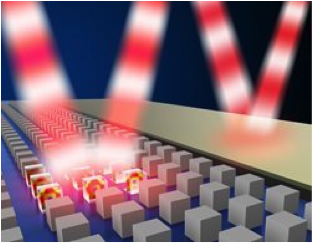 Magnetic Mirrors Enable New Technologies by Reflecting Light in Uncanny Ways
From The Optical Society (OSA), October 16, 2014
"As reported in The Optical Society's (OSA) new high-impact journal Optica, scientists have demonstrated, for the first time, a new type of mirror that forgoes a familiar shiny metallic surface and instead reflects infrared light by using an unusual magnetic property of a non-metallic metamaterial.
By placing nanoscale antennas at or very near the surface of these so-called "magnetic mirrors," scientists are able to capture and harness electromagnetic radiation in ways that have tantalizing potential in new classes of chemical sensors, solar cells, lasers, and other optoelectronic devices.
"Our breakthrough comes from using a specially engineered, non-metallic surface studded with nanoscale resonators," said Michael Sinclair, co-author on the Optica paper and a scientist at Sandia National Laboratories in Albuquerque, New Mexico, USA who co-led a research team with fellow author and Sandia scientist Igal Brener."
|
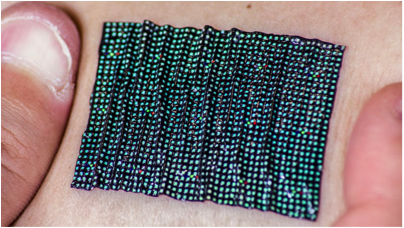 'Skin-Like' Device Monitors Cardiovascular and Skin Health
From Northwestern University,
September 24, 2014, by Megan Fellman
"A new wearable medical device can quickly alert a person if they are having cardiovascular trouble or if it's simply time to put on some skin moisturizer, reports a Northwestern University and University of Illinois at Urbana-Champaign study.
The small device, approximately five centimeters square, can be placed directly on the skin and worn 24/7 for around-the-clock health monitoring. The wireless technology uses thousands of tiny liquid crystals on a flexible substrate to sense heat. When the device turns color, the wearer knows something is awry.
The technology uses the transient temperature change at the skin's surface to determine blood flow rate, which is of direct relevance to cardiovascular health, and skin hydration levels. (When skin is dehydrated, the thermal conductivity property changes.) "
Image Source: Northwestern University/John A. Rogers |
|
|
|
|
|
Upcoming Conferences of Interest
|
|
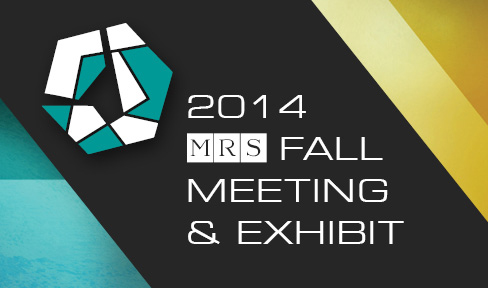
2014 MRS Fall Meeting & Exhibit
November 30-December 5, 2014
Hynes Convention Center
Boston, Massachusetts USA
The 2014 Materials Research Society Fall Meeting & Exhibit features many new and emerging areas of materials research as well as an exciting mix of well-established and popular topics, including: biomaterials and soft materials, electronics and photonics, energy and sustainability, nanomaterials and synthesis, theory, characterization and modeling. With 52 technical symposia, more than 6000 oral and poster presentations, an exhibition featuring over 250 international exhibitors from all sectors of the global materials science and engineering communities, and many special events, the 2014 MRS Fall Meeting & Exhibit offers attendees a wide-range of knowledge-building opportunities.
For the most up-to-date information on the 2014 MRS Fall Meeting, visit:
| |
|
|

SPIE Photonics West
February 7-12, 2015
The Moscone Center
San Francisco, California, USA
Join your peers at SPIE Photonics West, the #1 laser, photonics, and biomedical optics conference: 20,000 attendees, two exhibitions, 1,250 exhibiting companies, and 4,700 papers on biomedical optics, biophotonics, translational research, industrial lasers, optoelectronics, microfabrication, 3D printing, MOEMS-MEMS, optical communications, displays, and more.
For the most up-to-date information on Photonics West 2015, visit:
| |
|
|

BIT 1st Annual World Congress of Smart Materials - 2015
March 23-25, 2015
Busan Exhibition & Convention Center (BEXCO)
Busan, Republic of Korea
WCSM-2015 is intended to provide a platform for professionals around the world to exchange state-of-the-art research and development and identify research needs and opportunities in this emerging field of Smart Materials. This is the Asian Branch of WCAM (World Congress of Advanced Materials). Smart materials are one of the most important researching directions in development of High-tech new materials and can help in removing the boundaries between structural and functional materials, which may result in significant revolution in materials science development. WCSM will bring about enormous benefits as well as open up a new and broader pathway for information and experience exchange all over the world.
January 15, 2015: Deadline for Abstract Submissions
Learn More and Register Online:
| |
|
|
Do You Have an Interesting Article to Share?
|
Interested in sharing the latest news in vacuum coating technology? Forward us a link to an article you want to share with the rest of the SVC readership to publications@svc.org. Purchase advertising space in this newsletter by contacting SVC at svcinfo@svc.org.
Society of Vacuum Coaters 
71 Pinon Hill Place NE
Albuquerque, New Mexico 87122
505-856-7188
|
|
|
|
|